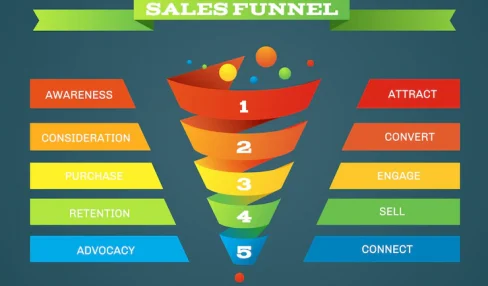Mastering Lead Assignment: Strategies For Effective Lead Distribution
6 Mins Read
Published on: 21 July 2023
Last Updated on: 07 December 2024

toc impalement
Businesses aiming to optimize performance and maximize conversion rates understand the value of effective lead assignment.
Implementing robust strategies ensures that the leads in the system are assigned to the right salesperson at the right time. It increases productivity, improves customer satisfaction, and ultimately gives higher revenue.
This article will discuss the key steps to master lead assignment and explore various effective lead distribution strategies.
Regardless of the size of your organization, these strategies can be tailored according to your unique requirements and industry.
What is Lead Distribution?

The current business landscape relies heavily on leads. In fact, most businesses use leads to push their products or SaaS business modules. Therefore, lead distribution is re-routing and distributing leads to sales representatives.
These representatives then try to actively turn these leads into full-fledged sales. As a result, generating leads and distribution are two of the most important parts of the current business landscape.
Here is a brief rundown of the complete process of distribution of leads to turning those leads into sales:
Stage 1: The first stage of the process is known as lead generation. In this step, the lead is generated using technology and user data.
Stage 2: The second stage of the process is vetting the lead. This is another important part of the process as it verifies the quality of the lead.
Stage 3: The third stage is known as lead scoring. This is a method of ranking the leads based on their viability. The urgent leads are ranked higher than the latent or passive leads.
Stage 4: The final step of the process is called lead assignment. Lead assignment is very important as it is passed on to the official who will take care of the lead.
Therefore, this is the whole process of lead distribution. The process stays the same across business models. However, there might be some differences.
Lead Distribution Strategies You Must Know
This article will discuss the key steps to master lead assignment and explore various effective lead distribution strategies.
Regardless of the size of your organization, these strategies can be tailored according to your unique requirements and industry.
Understand Your Leads
You can only achieve effective lead assignments when you clearly understand your leads. Analyze their demographics, preferences, buying behaviors, and other relevant data.
Use this information to segment and prioritize leads effectively. By identifying high-quality leads, you can allocate appropriate resources and assign them to the most suitable salespeople within your team.
Define Lead Distribution Rules
No two leads are the same; neither are the sales reps. Establish clear rules that govern the process to maintain consistency and transparency in lead distribution.
Consider lead quality, geography, product or service expertise, salesperson capacity, and performance metrics.
Document these rules to ensure everyone on your team is on the same page. Documenting the rules and the processes allows you to automate the distribution process and avoid biases or arbitrary assignments.
Automate Lead Distribution
Big organizations are leveraging technology to its full capacity. Don’t put yourself behind in this race.
A powerful Customer Relationship Management (CRM) software implemented in the system will automatically assign leads based on predefined rules and criteria.
Automation reduces the possibility of manual errors and ensures that leads are distributed fairly and efficiently. With CRM software, you can track lead interactions, capture relevant data, and analyze performance metrics for continuous improvement.
Implement Round-Robin Approach
Round-robin is a popular approach in lead assignment that ensures equal distribution among sales team members. This approach involves cyclically assigning leads so that each salesperson receives an equal number of leads over time.
The round-robin method avoids overload or an imbalance in lead allocation and promotes fair distribution and equal opportunities for every sales team member.
Filter With Lead Scoring
Lead scoring is a valuable technique that helps you prioritize leads with a higher probability of conversion. This technique assigns scores to leads based on the factors such as lead source, engagement level, budget, authority, and need. Most of the lead distribution software comes with these features. Here, you can set weight on different criteria to create a score for the lead.
Assign the high-scoring leads to your top-performing salespeople or those with the relevant expertise. This strategy optimizes resource allocation and focuses on the leads with the highest potential.

Account-Based Marketing (ABM)
You can adopt an account-based marketing strategy for high-value leads or targeted accounts to improve your conversion rates significantly. Assign a dedicated salesperson or team to focus exclusively on these accounts.
You must provide personalized attention and tailored solutions to increase conversion chances and build strong relationships. ABM ensures that these valuable leads receive your sales team’s utmost care and attention.
Real-Time Lead Notifications
Fast response time can place your organization on the list of top performers, so you need prompt follow-up.
Set up real-time lead notifications to inform sales team members about new leads. These notifications can be sent through CRM software, email, or mobile applications.
Quick response times demonstrate your commitment to potential customers and keep them hooked on your brand. Otherwise, you can imagine a situation where you spend a lot of time, effort, and resources to educate your potential clients about the solution they need, and due to a lack of communication, they go to your competitors. All of your hard work goes in vain.
Regularly Evaluate And Optimize
To continually improve lead assignment and distribution strategies, monitoring and analyzing their effectiveness is important—track metrics such as lead-to-conversion rate, response time, and sales team performance.
Identify areas for improvement and make adjustments accordingly. Market dynamics change occasionally, and if you want to stay ahead of the competition, you should regularly evaluate and optimize your strategies.
Provide Training And Support
Effective lead management also includes empowering your sales team with the necessary skills and knowledge.
Therefore, offer regular training sessions and resources focusing on lead nurturing, sales techniques, and the effective use of CRM tools.
Continuous training means your sales team will remain current with industry trends and equip them to handle leads efficiently and effectively.
Foster Collaboration And Feedback
Encourage collaboration and promote a culture of open communication within your sales team. Share success stories, best practices, and lessons learned.
Create opportunities for team members to learn from each other’s experiences so that you can enhance overall performance and drive innovation.
Ask for feedback from your team members if they face any challenges or bottlenecks in the lead assignment process, and actively seek their input for process improvements.
Leverage Data Analytics

The more data you have, the better you can optimize lead assignment and distribution. Use lead management software or other analytics tools to gain insights into lead behavior, preferences, and conversion patterns.
Analysis of this data will help you identify trends, refine lead-scoring models, and fine-tune your distribution strategies. With data-driven decision-making, you can allocate resources more effectively and precisely target the right leads.
Personalize Lead Nurturing
Personalized lead nurturing becomes crucial once leads are assigned to your sales team. Tailor your communication and engagement strategies to align with each lead’s needs and preferences.
Leverage CRM data, past interactions, and customer profiling to deliver personalized experiences and build relationships.
Conclusion
Any organization willing to achieve sales success must master lead assignments and implement effective lead distribution strategies.
Implementing the strategies outlined in the article will enable your sales team to focus on the most promising leads, allocate resources efficiently, and increase conversion rates.
Remember, lead assignment is not a one-time task—it requires continuous refinement and adaptation to align with your business goals and market dynamics.
Read Also:


















Comments Are Closed For This Article